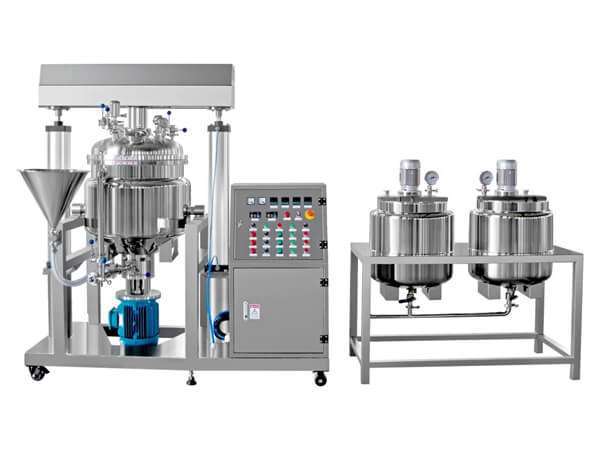What are the types of industrial mixers?

In the manufacturing industry, the best experts mostly reliable for the high-quality finished products are the industrial mixers. With the varying types of blades, pressure, speed, tanks, and configurations, they are designed to work effectively according to the need of the different substances that require processing. You’ll lose count of all the products that depend on these powered machines.
There are different forms of mixing. One would be batch mixing. Simply, the materials or ingredients are placed inside the mixer and get blended at a particular amount of time until they are completely mixed with one another. Next would be the continuous mixing. Materials are added over and over as the aqueous substance gets rapidly stirred unabatingly. Others would involve dissimilar methods.
Types of Industrial Mixers

Apparently, one type of mixer will not be able to accommodate the different raw materials and ingredients. These things possess diverse attributes and characteristics that demand an appropriate manner of processing. Innovators have built equipment that specializes in homogenization, some have made a mixer that is a perfect fit for dispersion or particle size reduction. In other words, some features in one agitator may not be present on the other. That’s how they work.
Let us now dig deeper. What are the different types of industrial mixers?
Being informed about this will help you decide which mixer will work best on your application and which will not. If you’re ready, read on!
1. Convective Mixers
Convective blenders function at a short mixing period. Some industries prefer this type because it works much faster than the others. But the thing is, it is less practical for diffusive operations. Physically, they are firm, resolute shelves with an impeller – a tool that rotates at a speed rate – such as paddle, plow or ribbon.
Mixers that classify under this category are ribbon blenders, paddle blenders, and vertical screw blenders – via movement, they transmit heat.
2. Tumbler Mixers
Examples of tumbler mixers are v-shape blender, double-cone blender, and slant blender. They utilize air in mixing or blending, upstream or downstream. Tumbler mixers help in filling, mixing, sealing and storing materials inside the tank so that cross-contamination and double-handling of the products would be prevented.
3. Fluidization Mixers
The process of mechanical fluidization involves particle division and perturbation through impingement. A rotating element is used to cause turbulence and rapid churning among the materials within the tank. They move through the solids as if they were hydrous substance. Items include plow and double-paddle mixers.
Fluidization blenders are also used for wet and dry mixing, slurry mixing, and even high viscosity liquid mixing.
4. Agitators
From the name itself, we know it would cause extreme shaking and disturbance. This is agitators’ way of mixing, emulsifying, and so on. They are outstanding in combining one liquid with another – especially the so-called ‘immiscible’ substances. Agitators also disseminate gases into liquids. They suspend solids into aqueous materials as well and enable heat transfer.
Commonly, agitators release a centrifugal force from a central agitating blade. These agitating rods may be stationary or removable. On the other hand, this type of mixers does not do a highly efficient job when dealing with viscous or thick materials.
5. Emulsifiers
Emulsifiers work similarly with agitators in terms of mixing two immiscible liquids like water and oil, but they do pretty well in mixing thick and glutinous substances.
Emulsifiers are famous in processing mayonnaise, pharmaceutical creams, ointments, etc. Choosing the right vacuum emulsifier will save you lots of money, effort and time for your business. Whether inline mixers, static machines or stand-alone equipment, blending cream and milk as well as water and oil will be successful with these type of mixers.
6. Homogenizers
Homogenizers aim to produce a homogeneous substance out of mixing a heterogeneous liquid with another liquid. They do this by impingement – radical force and strong pressure. Materials are broken down and blended completely afterward. Homogenizers contain shearing blades positioned at a vertical axis that work rapidly inside an enclosed container.
7. Drum Mixers
Among all others, this type has a broad selection of mixers. One of which is the portable drums mixer. It can be utilized for ‘in-container’ mixing. Meanwhile, other mixers that belong to this type are designed with their own containers where materials can be gushed into.
Drum mixers are most functional in processing medium to high viscosity mixtures.
Cement or adhesives are some of the materials prepared in this type of machine. They are also capable of milling different particle sizes like gravel slurry or that of fruits and ice cream.
Conclusion
Industrial mixers perform best when they work on elements, materials, and substances whose characteristics suit their features and functions well. Essentially, manufacturers must have correct and adequate knowledge about each type of an industrial mixer so that they will be able to leverage every piece of equipment that they will invest in. By then, the manufacturing industry will be able to increase its overall productivity and efficiency.
Featured image: Unsplash
HungaryTrends – The previous week in business and finance – 26th week
Source:





